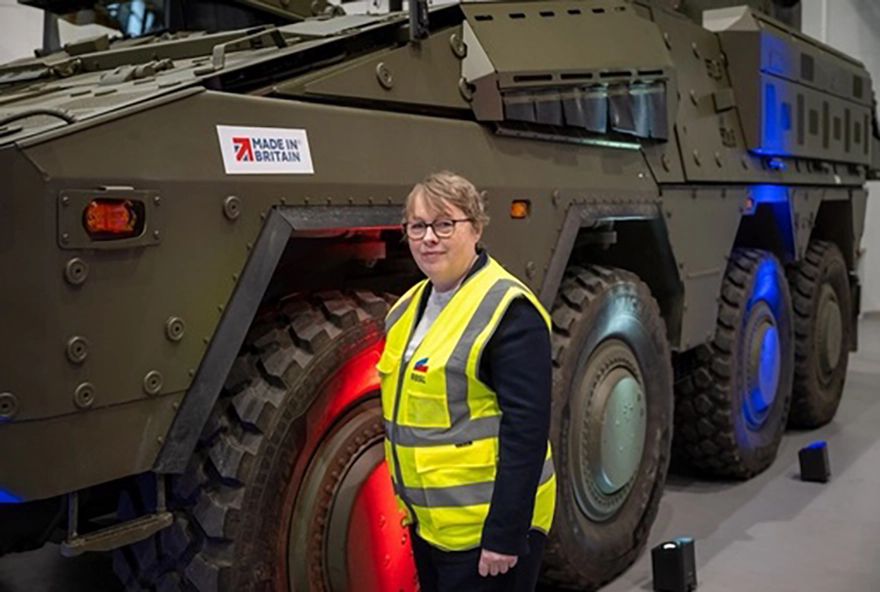 Minister for Defence Procurement and Industry, Maria Eagle visiting the Rheinmetall BAE Systems Land manufacturing facility in Telford
Minister for Defence Procurement and Industry, Maria Eagle visiting the Rheinmetall BAE Systems Land manufacturing facility in TelfordBritish soldiers will eventually benefit from 623 new ‘state of the art’ Boxer armoured vehicles, as the first fully British-built Boxer was unveiled at the
International Armoured Vehicle Conference yesterday in Farnborough.
The Boxer programme provides a significant boost to British industry, supporting around 400 skilled jobs and apprenticeships in Telford and Stockport, and a further 1,000 across the UK supply chain, supporting the Government’s growth mission. Delivering on the Government’s
Plan for Change, the Ministry of Defence is also developing a Defence Industrial Strategy to grow defence jobs in every region and nation.
Maria Eagle, Minister for Defence Procurement and Industry, unveiled the vehicle at the event yesterday. Around 75% of Boxer’s components are sourced in the UK, ensuring a resilient domestic supply. Some initial UK Boxer production is underway in Germany, while the manufacture transfers manufacture to the UK. The production of Boxer builds on the UK Government’s
Trinity House agreement, which fosters a common interest to better meet the defence challenges of the future.
£5 billion is being invested in equipping the British Army with 623 Boxer armoured vehicles, alongside 148 Challenger 3 tanks, which are expected to be in service by the end of 2030. These investments continue to solidify the UK’s position as a global leader in defence innovation and manufacturing.
The production of the British Army’s three new platforms — Ajax, Boxer and Challenger 3 combined — will create and sustain more than 6,000 jobs across the UK. It will also help UK troops move more rapidly by transporting soldiers, to and around the battlefield. Armoured Boxer vehicles can be rapidly adapted to suit various military missions.
Maria Eagle said: “It was a pleasure to unveil the first fully British-made Boxer — a testament to the expertise and innovation of Britain’s growing defence industry. The home-grown production of this world-class vehicle exemplifies our Government’s Plan for Change, deepening our partnership with industry to deliver 1,000s of highly skilled jobs and drive growth across the UK.”
The vehicle unveiled yesterday was manufactured entirely in the UK by
Rheinmetall BAE Systems Land in Telford, with collaboration from
KNDS UK Stockport and national supply chains. The UK played a major role in the original design, development and testing of the Boxer, and the vehicle can be built and exported from the UK.
Historic momentJohn Abunassar, CEO of Rheinmetall in the UK, added: “The unveiling of the first British-made Boxer is a historic moment for UK defence manufacturing. It not only symbolises the return of armoured vehicle production to British soil but also underscores Rheinmetall’s commitment to delivering sovereign capability, innovation, and economic prosperity for the UK. The Boxer is more than a vehicle — it is a ‘Future Force Enabler’ — ensuring the British Army is ready to meet tomorrow’s challenges while delivering real benefits today.”
Consultation on the Defence Industrial Strategy will run until end of February and will be published in the late spring of 2025, with a remit extending to 2035. It will be a sector plan as part of the wider Government’s Industrial Strategy.